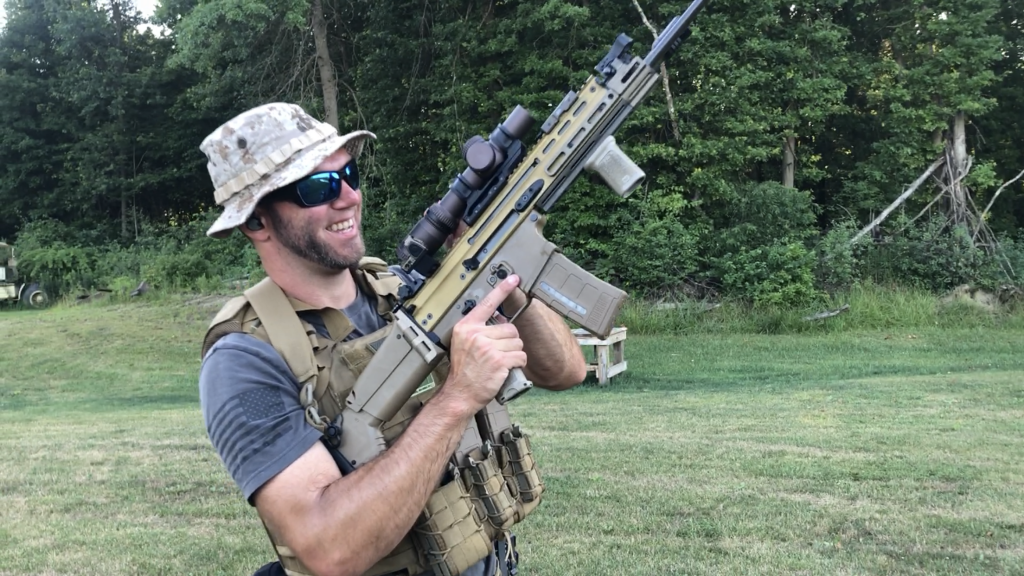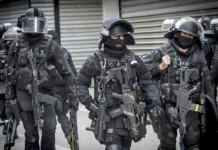It is the inevitable question.
“Hey guys, I just picked up *INSERT RIFLE* what should I get to finish it out?”
I answered this, in part, back here. But that article was mostly geared towards getting out and using the rifle and training to use it properly.
Mike (GarandThumb) is an Airforce officer and former survival instructor who has a YouTube channel. Kevin Owens was Special Operations in two armies (Ireland and the US) as well as a contractor. Aaron was a SEAL. Kevin especially has been part of equipment selection in special operations for the last portion of his career with his magnum opus being the newest modular sniper rifle, the MK22 ASR.
These guys know gear. They’ve used a LOT of gear. They’ve made mistakes with their gear and learned from it.
Watch the video and you can learn from it too.
The most poignant thing mentioned in the video, in my opinion, is Kevin’s emphasis that firearms are specialty tools. It’s easier to build them up to be very good at a niche particular role than to expertly cover a huge swath of roles. Your primary limitations are always going to be caliber and size.
The MP5 is a phenomenal CQB gun, it makes an equally phenomenal home defense gun. But it’s qualities also impose limitations on what the MP5, or any 9mm/45ACP sub gun, can do.
But, thanks to enhancements in ancillary force multipliers (aka: the stuff you put on and in the gun) a fighting rifle today can do a great deal more with a higher degree of success than 20 to 30 years prior. Even 5 years ago tech wasn’t what we have today. So with the specialization aspect in mind they go over the guns. Seriously, it is worth the watch. Hit play.
What is the rifle’s primary mission? Personal Defense, General Purpose, something else?
Kevin and Aaron show off two examples, an 11.5″ rifle with a CQB/Personal Defense type mission and a 14.5″ gun with a General Purpose type mission. The 11.5″ CQB gun is running a dot and magnifier and the 14.5″ is running an LPVO and offset dot. Kevin notes that the Vortex Razor Gen III 1-10x has capabilities that match or exceed the sniper rifle scopes that started GWOT, but now come in a carbine optic.
Rifles have received incremental material improvements, not really changing all that much. Better parts doing the same jobs within similar parameters. Optics, lights, and lasers have improved explosively and allowed the effective range of capabilities of the individual using the rifle to expand dramatically.
So what does the rifle (or PCC even) need to do. Is it a CQB personal defense gun for 25 yards and in, 50 on the outer edge, 100 at the extreme? Is it truly a general purpose rifle that should be able to do CQB and then transition to 300, 400, 500 yard targets very quickly? Is it a longer distance gun where a higher caliber is warranted since 800 or even 1,000 yards might be your shot envelope? What is the intended target, prairie dog or two legged predator?
Be sure to positively and objectively outline the rifle’s baseline mission. Be specific. Even ‘General Purpose’ is a specific mission profile that means you want equipment that will allow you to take maximum advantage of the full effective range of the rifle while not hindering it on either end of the engagement distance envelope, it can do 5 or 500 without being a hassle.
Your fighting gun is not also going to be optimized as your coyote gun, pick its job.
What other equipment is it working with?
Most importantly within this question, is it or is it not working with night vision. If you’re not using IR or thermal observation enhancing technology you can skip bolting on things that help aim and observe under those optics.
Yes, DBALs and MAWLs and such have visible lasers.
No, that does not make them necessary. You have a white light for a reason.
Yes, they are still really cool and it is okay to buy them anyway.
Under this consideration block don’t forget about your sling, your sidearm, and your kit for magazines and medical. Armor too if applicable.
Which tool for which fight?
Two examples, one of a Personal Defense carbine and the second of a General Purpose carbine. The X95 and SCAR16 have a lot of overlapping capability but their main job, the one I designated, is different.
The 13″ X95 is set for home and personal defense with thought given to being able to move within close spaces like a hallway or vehicle. It is one of two rifles I will run as “truck guns” and adding a magnifier behind the dot closes the gap to general purpose rather nicely while not taking away it’s goal as a personal defense carbine. The light selection, a surefire M600 with a wide throw, lights rooms cleanly. It carries the provision for a Surefire suppressor.
The SCAR is set for general purpose, able to take a long distance or short shot with similar ease out of the 14.5″ barrel while remaining usably mobile, even in interior spaces. Offset RMR dot for close, 1-10x for the remainder. The light selection is a PLHv2 Modlite on a Reptilia TORCH body, long beam throw to give as much white light range as I can on the rifle set up for widely variable distances. It carries the provision for a Surefire suppressor.
General purpose looks to cover unknown distance as evenly as possible within the capability of the rifle and ammunition.
Personal Defense looks to cover a known distance, close, with optimal equipment selection. It can be pressed to distance with variable success depending upon caliber selection but that is always a secondary consideration. Ammo selection is more likely to include intermediate barrier and medium consideration. What are your rounds going to do going through a door, wall, vehicle body, or vehicle glass?
Can each of these rifles do the job of the other one?
Absolutely, and I have a primary ‘alternate’ for both of these rifles that are set up as personal defense and general purpose respectively. Overlap is fine, it’s to be expected and encouraged. Don’t drift out of that primary mission.
And on suppressors, I love what Aaron covers in the video. It isn’t about getting the absolute quietest per shot can, that isn’t the job. It’s about controlling the rifles signature being able to give away your position and dampen noise levels over sustained fire so you can still hear. Suppressors are wonderful tools for confined space shooting safety.
Build to the mission
If it’s prairie dogs, pick equipment for shooting prairie dogs. Scope, ammo, etc, will reflect a greater range varmint rifle. That isn’t your bump in the night gun. The bump in the night gun has an always on/easy on CQC optic for across the room distances and both eyes open searching and shooting. It has a light to fill corners and search. It might have a suppressor because tinnitus is not a fun time.
Build to the mission, the job you need the gun to do. If you have another job that needs doing, another gun is what you need to do it.





